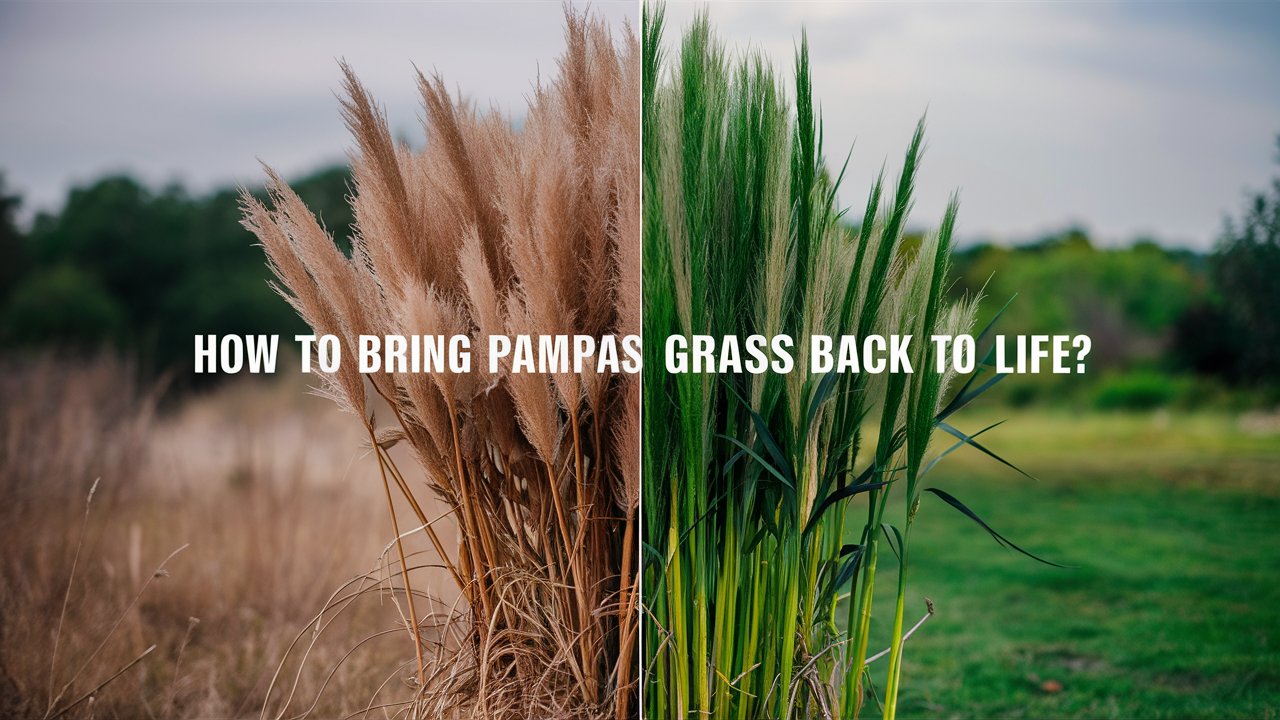Pampas grass, with its tall, feathery plumes, is a popular choice for gardens and home décor. Its dramatic presence can add a touch of elegance and natural beauty to any space. However, like any plant, pampas grass can sometimes lose its luster, looking dull, dried out, or even lifeless. If you’ve noticed your pampas grass isn’t as vibrant as it used to be, don’t worry! In this post, we’ll explore how to bring pampas grass back to life and restore its full beauty.
Why is Your Pampas Grass Dying, and How Can You Bring It Back to Life?
There are several reasons why your pampas grass may be looking a little worse for wear. It could be due to improper watering, lack of sunlight, poor soil conditions, or simply the natural aging process of the plant. The good news is that, with the right care and attention, you can revive your pampas grass.
- Assess the Watering: Pampas grass thrives in well-drained soil but requires regular watering, especially in hot, dry conditions. Make sure you’re watering it consistently, but avoid waterlogging, which can cause root rot.
- Sunlight is Key: Pampas grass needs plenty of sunlight to thrive. Ensure it’s planted in a spot where it receives at least six hours of direct sunlight daily.
- Soil Matters: Check the soil quality. Pampas grass prefers sandy or loamy soil that’s rich in organic matter. If your soil is too heavy or clay-like, consider amending it with compost or sand to improve drainage.
- Pruning for Health: Regularly prune your pampas grass, especially in late winter or early spring, to remove dead leaves and encourage new growth.
Can You Really Bring Dead-Looking Pampas Grass Back to Life? Find Out How!
It’s a common concern: you look at your once-beautiful pampas grass, and it seems beyond hope. But can you really bring it back to life? The answer is yes—most of the time! Even if your pampas grass looks dead, it may just be dormant. Pampas grass is a tough plant, capable of bouncing back with the right care.
To bring pampas grass back to life, start by cutting it down to about 12 inches above the ground in late winter. This allows new, healthy shoots to emerge in the spring. Also, don’t forget to fertilize in early spring with a balanced, slow-release fertilizer to give the plant the nutrients it needs to thrive.
What are the Best Methods to Rejuvenate Tired Pampas Grass?
Rejuvenating tired pampas grass involves a combination of good gardening practices:
- Fertilization: In addition to spring fertilization, consider feeding your pampas grass again in mid-summer to keep it growing strong throughout the season.
- Mulching: Apply a layer of mulch around the base of the plant to help retain moisture and regulate soil temperature.
- Pest Control: Keep an eye out for pests such as aphids or mealybugs, which can sap the vitality of your pampas grass. Use appropriate treatments if necessary.
How Long Does It Take to Bring Pampas Grass Back to Life, and What Steps Should You Follow?
The time it takes to bring pampas grass back to life can vary depending on the extent of the damage and the growing conditions. Generally, you should start to see improvements within a few weeks of implementing the steps mentioned above. Full recovery, with lush, tall plumes, may take an entire growing season.
To summarize, the steps to bring pampas grass back to life include:
- Pruning in late winter.
- Regular watering and ensuring proper drainage.
- Providing ample sunlight.
- Fertilizing in early spring and mid-summer.
- Monitoring for pests and taking action as needed.
FAQs
Q: Can I revive pampas grass that’s completely brown?
A: Yes, pampas grass can often be revived even if it’s completely brown. Cut it back, provide the right care, and new growth should emerge.
Q: How often should I water my pampas grass?
A: Water your pampas grass regularly, especially during dry spells, but ensure the soil drains well to avoid waterlogging.
Q: Is it necessary to prune pampas grass every year?
A: Yes, annual pruning helps remove dead material and promotes healthy new growth.
Q: What should I do if my pampas grass doesn’t bloom?
A: Ensure it’s getting enough sunlight and nutrients. If it’s in a shaded area, consider transplanting it to a sunnier spot.
Conclusion
Bringing pampas grass back to life is entirely possible with a bit of effort and the right techniques. Whether it’s due to environmental factors or simply neglect, pampas grass is a resilient plant that can often bounce back with the proper care. Remember, consistent watering, ample sunlight, good soil, and regular pruning are key to rejuvenating tired pampas grass. With these tips, your pampas grass will be back to its lush, vibrant self in no time!


